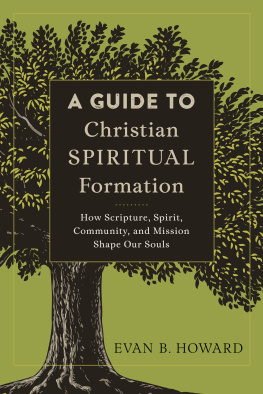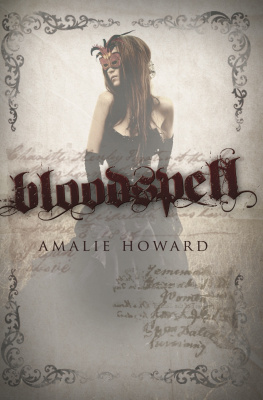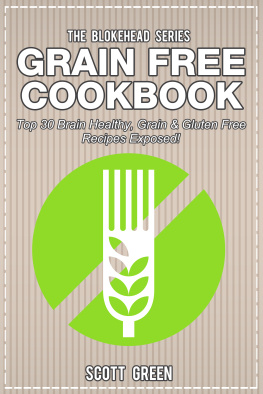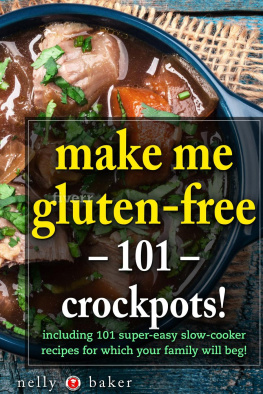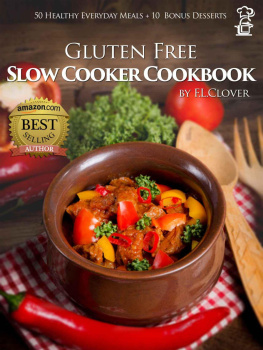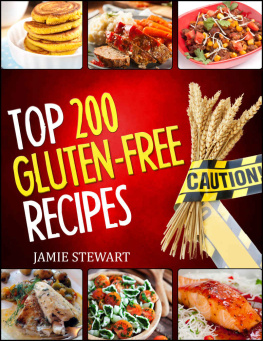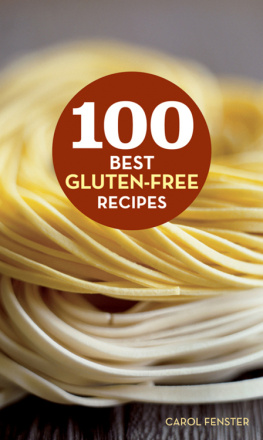HEALTHIER
Gluten-Free
All-Natural, Whole-Grain Recipes Made with Healthy Ingredients and Zero Fillers
Lisa Howard

2014 Fair Winds Press
Text 2014 Lisa Howard
Photography 2014 Kate Lewis
First published in the USA in 2014 by
Fair Winds Press, a member of
Quarto Publishing Group USA Inc.
100 Cummings Center
Suite 406-L
Beverly, MA 01915-6101
www.fairwindspress.com
Visit www.QuarrySPOON.com and help us celebrate food and culture one spoonful at a time!
All rights reserved. No part of this book may be reproduced or utilized, in any form or by any means, electronic or mechanical, without prior permission in writing from the publisher.
18 17 16 15 14 1 2 3 4 5
Digital edition published in 2014
Digital edition: 978-1-62788-016-9
Softcover edition: 978-1-59233-598-5
Library of Congress Cataloging-in-Publication Data
Howard, Lisa, 1977- author.
Healthier gluten-free : all-natural, whole-grain recipes that get rid of the refined starches, fillers, and chemical gums for a truly healthy gluten-free diet / Lisa Howard.
pages cm
1. Gluten-free diet--Recipes. 2. Cooking (Cereals) 3. Grain. 4. Natural foods. I. Title.
RM237.86.H685 2014
641.331--dc23
2013048704
Cover and book design by Caitlin Keegan
Photography/Food Styling by Kate Lewis
Prop Styling by Maryellen Echle
The information in this book is for educational purposes only. It is not intended to replace the advice of a physician or medical practitioner. Please see your health care provider before beginning any new health program.
To my mom, the best friend Ill ever have and the most talented cook I know.
Contents
INTRODUCTION
Welcome to a happier, healthier, gluten-free life! With so many gluten-free ingredients available in grocery stores and more gluten-free dishes on restaurant menus, going gluten-free is a lot easier than it used to be. Heck, with an open mind and this book in hand, it will be a culinary adventure! Time to awaken your taste buds to new flavors, and the rest of you to improved health. Heres to whole-grain, gluten-free deliciousness!
Youll especially love this book if you:
Must avoid gluten and/or wheat because of celiac disease, gluten intolerance/sensitivity, or a wheat allergy, but want to do it right and in the healthiest way possible.
Are thinking about avoiding gluten because you or someone you know suffers from arthritis, ADD, autism, depression, diabetes, fibromyalgia, IBS, migraines, thyroid disease, or any of the more than 50 autoimmune disorders that have been associated with celiac disease and gluten intolerance/sensitivity.
Have no problem with gluten but are curious about what other grainsand seeds and nuts and legumes and rootshave to offer.
Are diabetic, overweight, and/or suffering from metabolic syndrome and need to adopt a whole-grain lifestyle.
Would like more variety on your plate.
Would like to enjoy whole-grain, whole-food dishes and baked goods made without refined sugar.
Would like to learn more about baking and cooking elements so that you can create your own whole-grain, whole-food recipes.
Are thinking about switching to pastured animal products and natural fats.
PART I
WHAT GLUTEN-FREE MEANS
Knowledge is power! And knowledge makes things less scary, too. If youre feeling intimidated by the whole gluten thing, dont beyoure about to find out what gluten actually is, how it may be affecting you, and where (and where not) youll find it. Youre about to become an expert!
CHAPTER 1
DEFINING GLUTEN IN EVERYDAY TERMS
WHAT GLUTEN IS
Ever played with Play-Doh? Thats gluten. You can make gluten yourself by simply stirring cold water and all-purpose white flour together in a bowl until it begins to turn into a thick paste. Eventually, the dough becomes firm enough to pick up and knead. Thats gluten. If you mix it with dye and give it to a child to play with, its Play-Doh. In Asian, vegan, and macrobiotic cuisines, hunks of gluten are called seitan or wheat meat because its commonly served in place of meat.
On a little less fun and a little more fundamental level, gluten consists of two proteinsgliadin and gluteninwoven together into a stretchy network. The elasticity of that network is what allows bakers to create an infinite variety of airy, chewy breads. French baguettes are one of the best examples of how stubbornly elastic gluten is. Ever tried playing tug-of-war with a loaf? Your arms might give out before the loaf does.
WHERE GLUTEN IS
While several grains contain gluten, wheat contains by far the most: More than 80 percent of wheats inner starchy endosperm is composed of gluten. That high gluten content makes wheat the ideal grain to use when making yeast-risen doughs and breads. Gluten is also imperative for doughs that have to be stretched paper-thin, like the puff pastry dough used in baklava and croissants.
Youll find wheat occupying grocery shelves in many different forms. Durum (sometimes also called emmer) and semolina are both used to make pasta; bulgur is coarsely chopped durum wheat. Couscous is made from semolina. Graham flour and matzo dough are made of various types of wheat. And as mentioned earlier, seitan is unabashed, flat-out gluten.
Then there are wheats gluten-containing cohorts: barley, rye, kamut, spelt, farro, and triticale. While some people who cannot eat wheat can safely consume barley and rye, those who cannot eat gluten cannot eat any gluten-containing grains or the products mentioned above.
And did you know that different kinds of wheat flour contain different levels of gluten? For example, while flour made of hard winter wheatcommonly known as bread flourcontains about 14 percent gluten, cake flour, made from soft winter wheat, contains only about 7 percent gluten. As the term soft implies, this flour is used to make cakes, muffins, pies, and biscuits with soft, crumbly textures rather than chewy baked goods like those French baguettes we talked about earlier. Thats good to know, because low-gluten favorites can easily become gluten-free favorites, with no one the wiser!
WHEAT & ITS MANY NAMES
Following are some of the many varieties and names of wheat:
Semolina
Durum
Bulgur
Couscous
Pastas
Bread flour
Bleached flour
All-purpose flour
Self-rising flour
Cake flour
Farina
Pastry flour
Spelt
Kamut
Emmer
Farro
Einkorn
Triticale
Dinkel
These two non-wheat grains also contain gluten:
Rye
Barley
Just avoiding wheat means avoiding everything included in the first list, while avoiding gluten means avoiding all the foods from both lists. Remember, all wheat contains gluten, but gluten is found in more than just wheat.
A Sticky Situation: Glutenous vs. Glutinous
Its important to point out that glutenous does not mean the same thing as glutinous. Glutenous means gluten-containing, while glutinous means sticky, as in glutinous (sticky) rice. While its possible to be glutenous and glutinous at the same timethink of that childhood Play-Dohglutinous rice and glutinous rice flour are in fact gluten-free (as are foods made with them, as long as no gluten-containing ingredients have been added).



